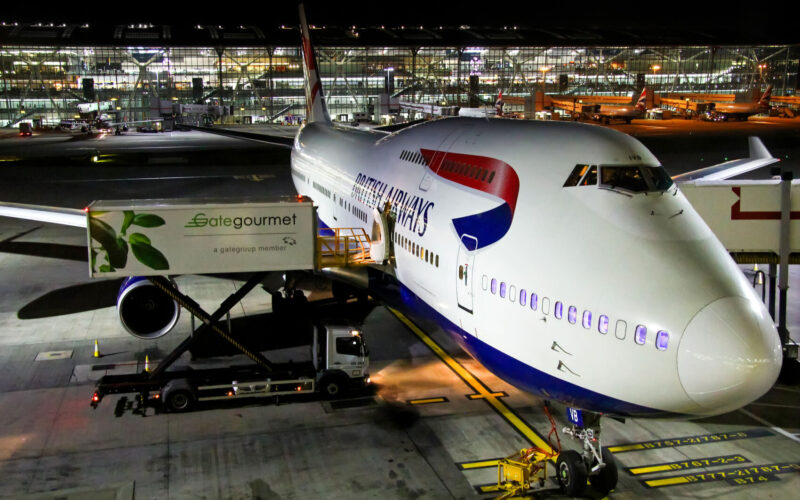Back in December 2019, a British Airways Boeing 747, carrying 328 passengers and 17 crew onboard, was approaching a parking stand in London Heathrow Airport (LHR), when it collided with a fuel transfer vehicle. Now, British authorities have published their findings into what they deemed “serious incident”.
British Airways Boeing 747-400, registered as G-CIVU, landed in London Heathrow Airport (LHR) on December 20, 2019. The airline was running behind schedule and its another aircraft, an Airbus A320, was still occupying the stand where the Jumbo Jet was due to park. Despite it being just after 3 pm, it was already dark and raining heavily.
Some two minutes later Airbus pushed back and made room for a wide-body to reach the stand. The Boeing 747 captain saw the stand guidance system illuminate and, monitoring the right wingtip of the plane to avoid brushing into the Airbus, started to taxi onto stand.
It was only after the aircraft was parked and passengers disembarked, when the pilots were told that their aircraft hit a fuel transfer vehicle that had been parked on the stand.
At the time of the incident, the visibility was aggravated by dark conditions, heavy rain and the glare from the terminal lights, the UK Civil Aviation Authority Air Accidents Investigation Branch (AAIB) investigators outlined in the report, published on May 14, 2020. The Boeing captain saw no vehicles on the stand. The stand guidance system was switched on ‒ suggesting the stand was clear.
The operator’s ground staff, who switched on the system, had to ensure the stand was clear. However, since two people were assigned to the arrival, it was not clear whose responsibility it was. As per instructions, the ground staff could check the stand from the head of the stand, but on this stand it is not possible to see all of it from this position, the investigators also found.
“The collision occurred because neither the flight crew nor the ground staff assigned to the arrival saw the vehicle on the stand,” the conclusion of the report states. “The adverse weather conditions are likely to have been a significant factor.”
Neither the 345 people onboard the plane, nor the truck driver suffered any injuries during the incident. The Boeing 747 No 1 engine cowl and the rear of the fuel transfer vehicle were damaged and needed repairs. Both were later returned to service.

